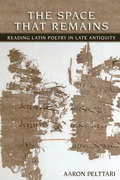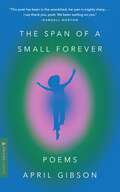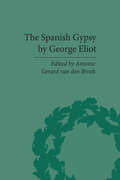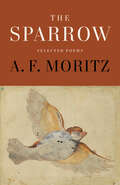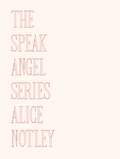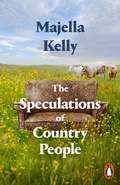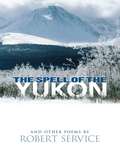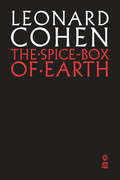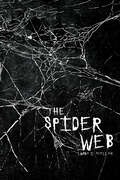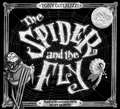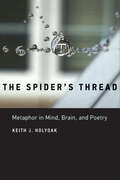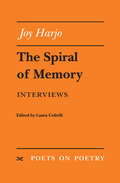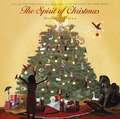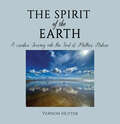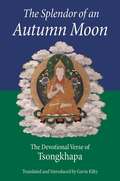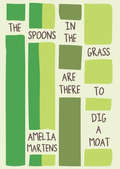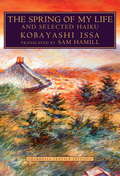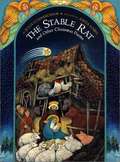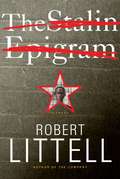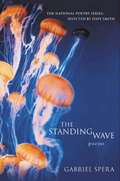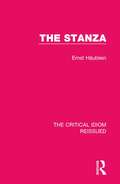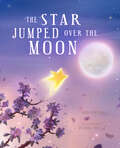- Table View
- List View
The Space that Remains: Reading of Latin Poetry in Late Antiquity
by Aaron PelttariWhen we think of Roman Poetry, the names most likely to come to mind are Vergil, Horace, and Ovid, who flourished during the age of Augustus. The genius of Imperial poets such as Juvenal, Martial, and Statius is now generally recognized, but the final years of the Roman Empire are not normally associated with poetic achievement. Recently, however, classical scholars have begun reassessing a number of poets from Late Antiquity—names such as Ausonius, Claudian, and Prudentius—understanding them as artists of considerable talent and influence. In The Space That Remains, Aaron Pelttari offers the first systematic study of these fourth-century poets since Michael Robert's foundational The Jeweled Style (Cornell, 1989). It is the first to give equal attention to both Christian and Pagan poetry and the first to take seriously the issue of readership. Like the Roman Empire, Latin literature was in a state of flux during the fourth century. As Pelttari shows, the period marked a turn towards forms of writing that privilege the reader’s active involvement in shaping the meaning of the text. In the poetry of Ausonius, Claudian, and Prudentius we can see the increasing importance of distinctions between old and new, ancient and modern, forgotten and remembered. The strange traditionalism and verbalism of the day often concealed a desire for immediacy and presence. We can see these changes most clearly in the expectations placed upon readers. The space that remains is the space that the reader comes to inhabit, as would increasingly become the case in the literature of the Latin Middle Ages.
The Span of a Small Forever: Poems
by April GibsonWith echoes of Audre Lorde’s The Cancer Journals and Susan Sontag’s Illness as Metaphor, an extraordinary debut collection from a prize-winning poet that chronicles a Black woman’s journey through disability, the byzantine healthcare system, life-giving, taking, and sacrifice.With breathtaking lyricism and a vulnerability that pierces the heart, April Gibson journeys through the emotional abysses, the daily pleasures, the frustrations, and the joys of being a Black woman living with chronic illness. Gibson offers a unique perspective on “the body,” viewing disability and healthcare through both feminist and socio-economic lenses filtered by race and faith. Through gorgeous sensory language that migrates memories, from carefree innocence to the ravages formed in its absence, Gibson bears witness to grief, courage, and resistance to redefine herself on her own terms. Gibson presents her body as a “looking glass” that re-envisions illness, womanhood, motherhood, religious relics and collective loss through her physicality, through her lamenting, through her unearthing, reckoning and rebirth. Not only do we see her, but see the “we” in her. The Span of a Small Forever is both testimony and transformation—heart-shattering in its honesty, it ultimately offers us transcendent beauty, nourishment, and the strength we need to go on in our lives.
The Spanish Gypsy by George Eliot (The Pickering Masters)
by Antonie Gerard van den BroekIn 1864, George Eliot began writing her longest poem, "The Spanish Gypsy". This project exhausted her, and her partner took the manuscript away from her for fear it was making her ill. This work explains what Eliot read to research the poem, which parts caused her particular problems and summarises the poem's critical reception.
The Spanish Song Companion
by Richard Stokes Jacqueline CockburnThe Spanish song companion introduces the English-speaking reader to the rich heritage of Spanish songs. Here in one volume are the texts of over 300 songs with parallel translations in accurate and readable English. The majority are love poems, which form a fascinating anthology of Spanish poetry from the thirteenth to the twentieth century. The introduction by Graham Johnson, who in recent years has done more than anyone to kindle interest in the international song repertoire, traces the history of Spanish song from its beginning, via the period of the Catholic kings in the fifteenth century, the Golden Age of the sixteenth, through to the remarkable rebirth in the twentieth century. All the songs and cycles frequently heard in recital are gathered here: Albeniz, Falla, Granados, Rodrigo and Obradors are generously represented, as well as Catalan composers such as Montsalvatge and Mompou. The volume is arranged chronologically by composer, and includes notes on all the major poets and composers, a discography, and names and addresses of the music publishers. Jacqueline Cockburn is Head of History of Art at Westminster School and an associated lecturer at Birkbeck College, University of London. RICHARD STOKES is author of J. S. Bach: The Complete Cantatas (Scarecrow Press, 2004), The Book of Lieder (Faber and Faber, 2005), and co-author of A French Song Companion, with Graham Johnson (Oxford University Press, 2000). Graham Johnson, the founder of the internationally acclaimed Songmakers' Almanac, is an admired accompanist with an unrivaled knowledge of song literature. In this electronic edition, each line of Spanish is followed on the next line by its line in English translation. DAISY markup has chapters at level 1 and each poet and each song at level 2.
The Sparrow: Selected Poems of A.F. Moritz
by A.F. MoritzFeaturing internationally acclaimed poetry from more than twenty books and chapbooks published over forty-five years, The Sparrow is a career-spanning selection that reveals how A. F. Moritz’s dynamic, ever-exploratory work is also a vast, singular poem. A. F. Moritz has been called “one of the best poets of his generation” by John Hollander and “a true poet” by Harold Bloom, who ranks him alongside Anne Carson. He is the recipient of numerous awards and honours throughout North America, including the Award in Literature of the American Academy of Arts and Letters, the Guggenheim Fellowship, Poetry magazine’s Beth Hokin Prize, the Ingram Merrill Fellowship, and the Griffin Poetry Prize.The Sparrow: Selected Poems of A. F. Moritz surveys forty-five years of Moritz’s published poems, from earlier, lesser-known pieces to the widely acclaimed works of the last twenty years. Here are poems of mystery and imagination; of identification with the other; of compassion, judgement, and rage; of love and eroticism; of mature philosophical, sociological, and political analysis; of history and current events; of contemplation of nature; of exaltation and ennui, fullness and emptiness, and the pure succession and splendour of earthly nights and days.The Sparrow is more than a selected poems; it is also a single vast poem, in which the individual pieces can be read as facets of an ever-moving whole. This is the world of A. F. Moritz — a unique combination of lyrical fire and meditative depth, and an imaginative renewal of style and never-ending discovery of form.
The Speak Angel Series
by Alice NotleyThe Speak Angel Series is composed of six full-length books in various forms but towards the achievement of a unifying epic narrative in which the poet, as character, leads all the souls of all the living and dead to a point zero where the remaking of the cosmos can be performed. As this is being done, the official public world takes place in Paris, France and the United States, and new “characters” are incorporated from the news and from the poet’s life. The forms include a long-line narrative broken by lyric stand-alones, an operatic form designed to make the reader chant if reading aloud, two spiritual sequels to the author’s book The Descent of Alette, written in the same stanzaic form, a book that is simply a collection of different kinds of poems, a book formed by literary collaging, and a final, long book that is the volume’s ultimate culmination. The Speak Angel Series took years to accomplish but is finally ready; it is meant to be read for plot, pleasure, musical experience, wisdom and truth. Why not? The books present something like a cosmology in the philosophical sense, a reading of existence and of death. The dead are very close-by and available in the series, which is a work of stunning ambition.
The Speculations of Country People
by Majella Kelly'Ruminative and enigmatic . . . powerful' Simon Armitage'Tenderly inquisitive . . . a powerful poetry of witness . . . full of discovery' Alycia Pirmohamed'Majella Kelly offers so much: ecstatic lyricism . . . emotional excavation and virtuosic skill' Kathryn Maris The astonishing poetry debut exploring hidden histories, mythical landscapes and self-discovery in the face of limits on women's bodily autonomyIn 2017, the presence of a mass grave was confirmed in a disused sewage system in Tuam, County Galway. In it were the bodies of infants - wards of the Bon Secours Mother and Baby Home, where from 1925 to 1961 the children of unmarried women were sent to live their lives in the care of nuns. Their deaths were the result of a conservative culture which, under the influence of the Church, took a prurient interest in women's private lives and bodies.In The Speculations of Country People, her hauntingly lyrical debut collection, Majella Kelly reckons with that legacy. She traces the journeys of women in our own day, from controlling relationships to sexual reawakening and new happiness. The speculations of the title are in part those of gossip, the chatter of small communities everywhere; but they are also those of a local, very Irish mythos, in which pagan and Christian - and truth and legend - blend and blur.Here, then, are hares and selkies, a seductive 'master otter' of 'fabulous elegance' who might carry a woman away in the night; here is the last man on Omey Island; here a retired stuntman, dragging his bed of rusty nails along the beach. And here - quiet, against the beauty and loneliness of the Connemara landscape - are the little bones that wash up on shores or stick from the earth to speak of what has been.
The Spell of the Yukon and Other Poems
by Robert Service"There are strange things done in the midnight sun," declared Robert Service as he related the fulfillment of a dying prospector's request. "The Cremation of Sam McGee" was based on one of many peculiar tales he heard upon his 1904 arrival in the Canadian frontier town of Whitehorse. Less than a decade after the Klondike gold rush, many natives and transplants remained to tell stories of the boom towns that sprang up with the sudden influx of miners, gamblers, barflies, and other fortune-seekers. Service's compelling verses — populated by One-Eyed Mike, Dangerous Dan McGrew, and other colorful characters — recapture the era's venturesome spirit and vitality.In this, his best-remembered work, the "common man's poet" and "Canadian Kipling" presents thirty-four verses that celebrate the rugged natural beauty of the frozen North and the warm humanity of its denizens. Verses include "The Shooting of Dan McGrew" ("A bunch of the boys were whooping it up in the Malamute saloon"), "The Heart of the Sourdough" ("There where the mighty mountains bare their fangs unto the moon"), and "The Call of the Wild" (Have you gazed on naked grandeur where there's nothing else to gaze on"). Generations have fallen under the spell of these poems, which continue to enchant readers of all ages.
The Spice-Box of Earth
by Leonard CohenTo mark the publication of Leonard Cohen's final book, The Flame, McClelland & Stewart is proud to reissue six beautiful editions of Cohen's cherished early works of poetry, many of which are back in print for the first time in decades. A freshly packaged new series for devoted Leonard Cohen fans and those who wish to discover one of the world's most adored and celebrated writers.Originally published by McClelland & Stewart in 1961, The Spice-Box of Earth was Leonard Cohen's breakout book, announcing the arrival of a major talent, and a popular one--the first edition sold out in less than three months, and one reviewer hailed Cohen as "probably the best young poet in English Canada right now." In his second collection, Cohen deepens his engagement with subjects that would define his career; as biographer Sylvie Simmons argues, "the poems dance back and forth across the border between the holy and the worldly, the elevated and the carnal."
The Spider Web
by Lubna E. AtallahA fertile space for the imagination Between abortive romances, disappointment vs. hope, and past vs. present, The Spider Web taps on your experiences and inspires you to live your way; either get stuck in the spider web or cut your way through it.
The Spider and the Fly
by Tony Diterlizzi Mary HowittA New Version of an Old Story first appeared in The New Year's in 1829 and five years later in Mary Howitt's Sketches of Natural History. Teaches a moral - Not everyone who talks sweetly offers sweets.
The Spider's Thread: Metaphor in Mind, Brain, and Poetry (The\mit Press Ser.)
by Keith J. HolyoakAn examination of metaphor in poetry as a microcosm of the human imagination—a way to understand the mechanisms of creativity.In The Spider's Thread, Keith Holyoak looks at metaphor as a microcosm of the creative imagination. Holyoak, a psychologist and poet, draws on the perspectives of thinkers from the humanities—poets, philosophers, and critics—and from the sciences—psychologists, neuroscientists, linguists, and computer scientists. He begins each chapter with a poem—by poets including Samuel Taylor Coleridge, Sylvia Plath, Walt Whitman, Emily Dickinson, Robert Frost, Theodore Roethke, Du Fu, William Butler Yeats, and Pablo Neruda—and then widens the discussion to broader notions of metaphor and mind. Holyoak uses Whitman's poem “A Noiseless Patient Spider” to illustrate the process of interpreting a poem, and explains the relevance of two psychological mechanisms, analogy and conceptual combination, to metaphor. He outlines ideas first sketched by Coleridge—who called poetry “the best words in their best order”—and links them to modern research on the interplay between cognition and emotion, controlled and associative thinking, memory and creativity. Building on Emily Dickinson's declaration “the brain is wider than the sky,” Holyoak suggests that the control and default networks in the brain may combine to support creativity. He also considers, among other things, the interplay of sound and meaning in poetry; symbolism in the work of Yeats, Jung, and others; indirect communication in poems; the mixture of active and passive processes in creativity; and whether artificial intelligence could ever achieve poetic authenticity. Guided by Holyoak, we can begin to trace the outlines of creativity through the mechanisms of metaphor.
The Spiral of Memory: Interviews (Poets On Poetry)
by Joy HarjoWith the recently-published The Woman Who Fell from the Sky, Joy Harjo has emerged as one of the most powerful Native American voices of her generation. Over the past two decades, Harjo has refined and perfected a unique poetic voice that speaks her multifaceted experience as Native American, woman and Westerner in twentieth-century society. The Spiral of Memory gathers the conversations in which Harjo has articulated her singular yet universal perspective on the world and her poetry. She reflects upon the nuances and development of her art, the importance of her origins, the arduous reconstruction of the tribal past, the dramatic confrontation between Native American and Anglo civilizations, the existential and artistic itinerary through present-day America, and other provocative and profoundly human themes. Joy Harjo is the author of several volumes of poetry. She received awards from the National Endowment for the Arts, the Before Columbus Foundation, and the Poetry Society of America. She is Professor of English, University of New Mexico, Albuquerque. Laura Coltelli is Associate Professor of American Literature, University of Pisa.
The Spirit Level
by Seamus HeaneyThe 1996 Whitbread book of the year, this collection of poetry about the balance between nature, morality and spirituality comes from the 1995 recipient of the Nobel Prize in Literature.
The Spirit of Christmas
by Nancy TillmanChristmas is coming! Bells jingle, sleds dash through the snow, trees are topped with sparkling stars, and children everywhere dream of candy canes and presents. But the best gift of all - the most magical gift of the season - is when we spend Christmas with those we love. With glorious verse and artwork, New York Times bestselling author Nancy Tillman celebrates all of the special moments that become the holiday memories we carry throughout our lives. Families will treasure searching for the Spirit of Christmas on every page, and especially in their hearts.
The Spirit of the Earth: A creative Journey into the Soul of Mother Nature
by Vernon HutterThe Spirit of the Earth A creative journey into the soul of mother nature. Humanity is ‘part-of’ and not ‘apart from’ Nature and the Earth. We rely on her for everything that we stand for, which is why it’s so important to look after her. This book is a restorative journey, expressed in photographs and creative words. It conveys the process of regaining our true nature by reconnecting with Mother Nature. There are four processes, in which I have travelled the journey from the beginning, and which can be a guide for others to emulate… Reflection, Reconnection, Strength and Growth, and, finally, Change and Transition. The Creative Spirit is the bridge to becoming connected to the Spirit of the Earth once more. And when we have reconnected to Mother Nature, then we are able to heal our inner nature and fulfil our true purpose.
The Splendor of an Autumn Moon
by Je Tsongkhapa Gavin Kilty Kilty"Some of the most inspiring verses ever written."--Geshe Thupten Jinpa, PhD, founder, Institute for Tibetan ClassicsThe Tibetan saint Tsongkhapa (1357-1419), the founder of the Dalai Lama's tradition of Tibetan Buddhism, was renowned for his vast learning, meditational achievements, influential writings on practice and philosophy, and reform of tantric religious practices. A deeply humble and religious man, he expressed himself in exquisite verse.Here, presented in both the original Tibetan and in English translation, are twenty-one devotional poems by Tsongkhapa. Each verse--dedicated to the Buddha, bodhisattvas, and lamas--illuminates some aspect of the Buddhist path. Gavin Kilty's commentary places each prayer into context, and his careful, artful translations will appeal to anyone with a love of poetry.
The Spoons in the Grass Are There to Dig a Moat
by Amelia MartensAmelia Martens's prose poems reveal expansive ideas in compressed language. From the domestic to the geopolitical, from the mundane to the miraculous, these brief vignettes take the form of prayers, parables, confessions, and revelations.<P><P> Intimate and urgent, Martens's poems are strange, darkly funny, and utterly beguiling.Amelia Martens is the author of the chapbooks Purgatory (Black Lawrence Press, 2012), Clatter (Floating Wolf Quarterly, 2013), and A Series of Faults (Finishing Line Press, 2014). She received an MFA in Creative Writing from Indiana University, and lives in Paducah, Kentucky, where she teaches at West Kentucky Community & Technical College.
The Spring of My Life: And Selected Haiku
by Kobayashi IssaKobayashi Issa (1763-1827), along with Basho and Buson, is considered one of the three greatest haiku poets of Japan, known for his attention to poignant detail and his playful sense of humor. Issa's most-loved work, The Spring of My Life, is an autobiographical sketch of linked prose and haiku in the tradition of Basho's famous Narrow Road to the Interior. In addition to The Spring of My Life, the translator has included more than 160 of Issa's best haiku and an introduction providing essential information on Issa's life and valuable comments on translating (and reading) haiku.
The Stable Rat and Other Christmas Poems
by Julia CunninghamWhat a gathering it was! There were the quiet ox, the clucking hen, a cow, six sheep, a horse, and other animals. But no one looked at the stable rat--except the baby, who not only looked but loved. In these startlingly powerful poems, Julia Cunningham captures the mystery and magic of the Nativity for readers of every age. And Anita Lobel's magnificent paintings and brilliant iconography give each poem a setting that is at once personal and universal.
The Stalin Epigram
by Robert LittellBased on a riveting historical episode, The Stalin Epigram is a fictional rendering of the life of Osip Mandelstam, perhaps the greatest Russian poet of the twentieth century -- and one of the few artists in Soviet Russia who daringly refused to pay creative homage to Joseph Stalin. The poet's defiance of the Kremlin dictator and the Bolshevik regime-- particularly his outspoken criticism of Stalin's collectivization rampage that drove millions of Russian peasants to starvation-- reached its climax in 1934 when Mandelstam, putting his life on the line, composed a searing indictment of Stalin in a sixteen-line epigram and secretly recited it to a handful of friends and fellow artists.
The Standing Wave
by Gabriel SperaAn exciting first collection of poetry from an emerging talent, Gabriel Spera's The Standing Wave was a winner of the 2002 National Poetry Series Open Competition, selected by esteemed poet Dave Smith. For over twenty years, the National Poetry Series has discovered many new and emerging voices and has been instrumental in launching the careers of poets and writers such as Billy Collins, Mark Doty, Denis Johnson, Cole Swensen, Thylias Moss, Mark Levine, and Dionisio Martinez.
The Stanza (The Critical Idiom Reissued #35)
by Ernst HäubleinFirst published in 1978, this work bridges the gap between the study of poetic form, which tends to isolate form from meaning and structural poetics, which tends to focus on meaning without considering the stanza’s impact. Beginning with an examination of the various definitions of the stanza, the book goes on to describe the many forms of the stanza and the different strategies by which poets achieve stanzaic units of meaning. It then evaluates the logical relationships between stanzas, and, finally, assesses their place and function as parts within the poetic whole. This work will be of interest to those studying poetry and literature.
The Star Jumped Over the Moon
by John SchlimmGorgeous illustrations follow the friendship of an old apple tree and a tiny star through the seasons as the star learns to shine on its own.
